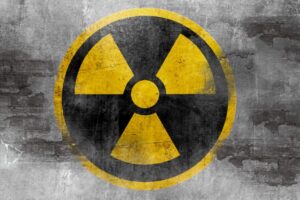Cables in Radioactive Environments
Shery George | 12 June 2024
Our cables are versatile and can be used in many different applications. They work well indoors and outdoors, in hot and cold places, in cleanrooms, and in oily air. But how do these cables perform in the radioactive environments?

What is Radiation?
Radiation is the movement of particles or waves. They are subdivided into three types: alpha, beta, and gamma radiation. The radiation dose is the energy absorbed by the radiated body over the radiation period. This helps determine the dose rate, which is measured in sieverts (Sv), grays (Gy), or the older unit, rads (Rd). The higher the dose, the greater the effect.
Cables in Radioactive Environments
People working in radioactive environments need products that last a set time without needing any replacement.Unexpected servicing means exposing personnel to the radioactive environment and thus to a great health risk. so it’s important to avoid as much as possible.
In 2020, a customer asked us for cables that could handle 106 Gy of radiation. We knew that cables with PUR outer jackets work best in such conditions, so we gave the customer several samples to test. Before and after the test, which the customer performed himself, tensile stress tests were performed.
We carefully recorded the material changes and evaluated them. We tested cables with different core insulation materials, and our CF270.UL.D core insulation performed the best. From these results, we decided to create custom cables to extend their service life. Good teamwork and close contact with the customer led to the first of many orders.
![]()
What Happens to the Materials?
Radiation interrupts the molecular chains in plastic. This makes the material harden, the jacket become porous, and causes damage to the cable. As a result, the cable stops working, and the machine shuts down. The longer the molecular chain, the better it can stand up to radiation.
What Materials Should Be Used for Cables in Radioactive Environments?
Materials with long molecular chains are better for use in radioactive environments. PVC has short molecular chains, while PUR has long ones.
It’s like how the skin reacts to the sun:
Darker skin can stay in the sun longer without protection, while lighter skin burns faster and worse.

Jacket and Insulation Materials in Cables
Some cable materials resist radiation better than others. Among the jacket materials we use, PVC has the worst resistance (10 Mrad), while PUR has the best (100 Mrad). TPE (15 Mrad) is only slightly better than PVC, so it is also not recommended.
Conclusion
In radioactive environments, the dose rate and duration are critical for cable use. Our PUR outer jacket offers the best radiation resistance, but we can’t predict the exact service life.
We are happy to help with any questions you have on this topic.
